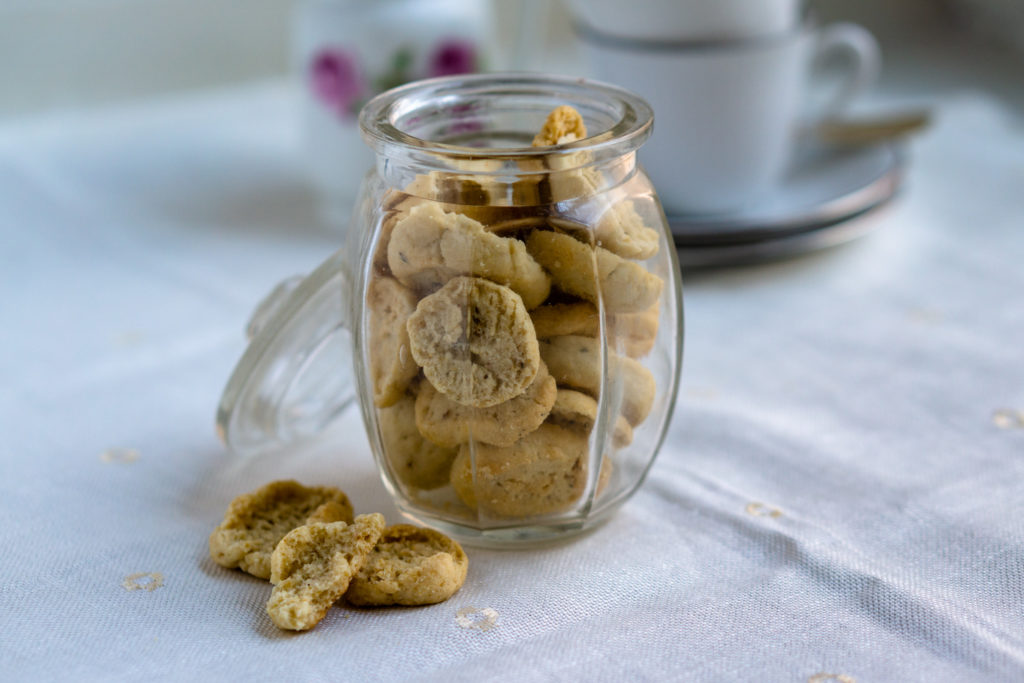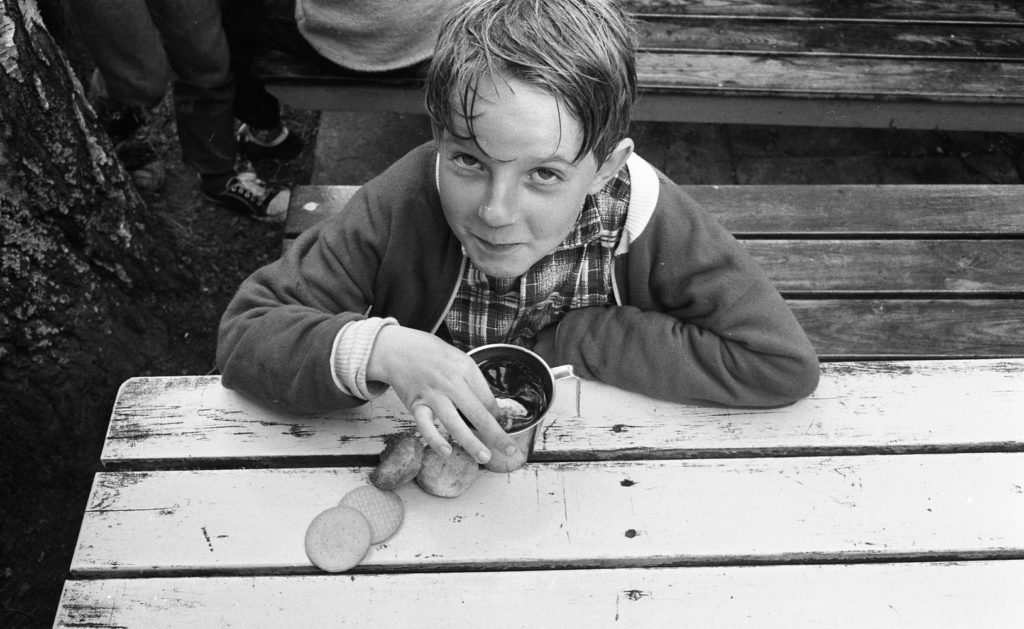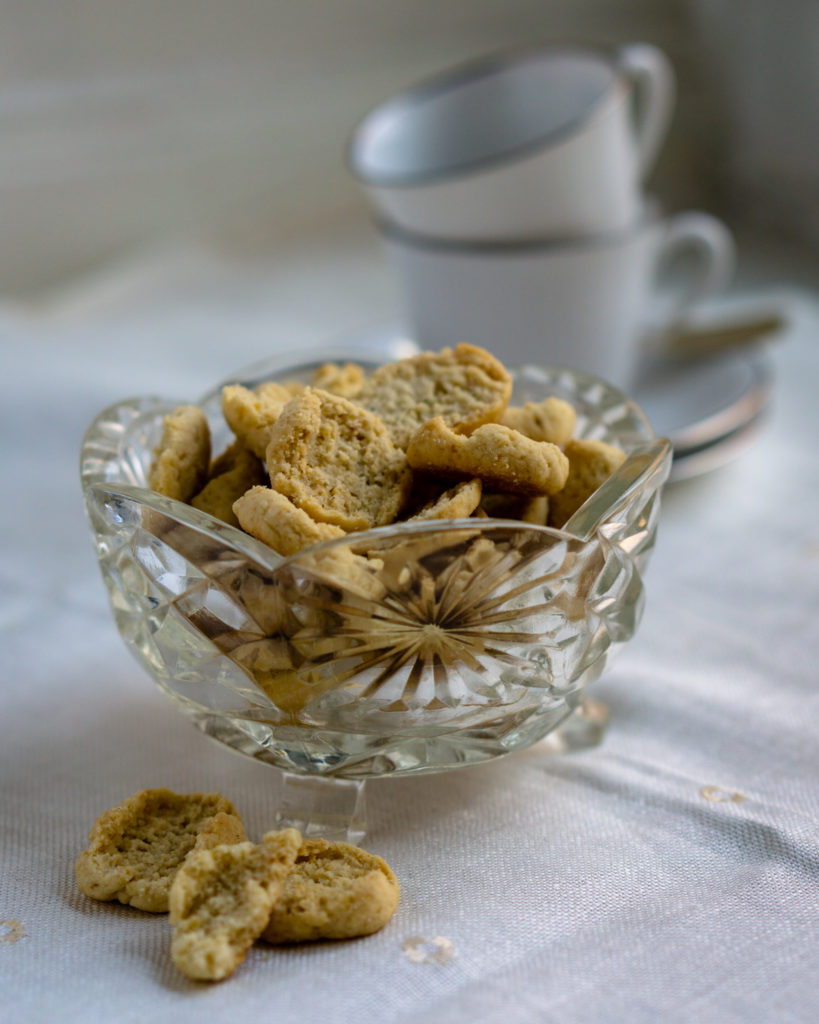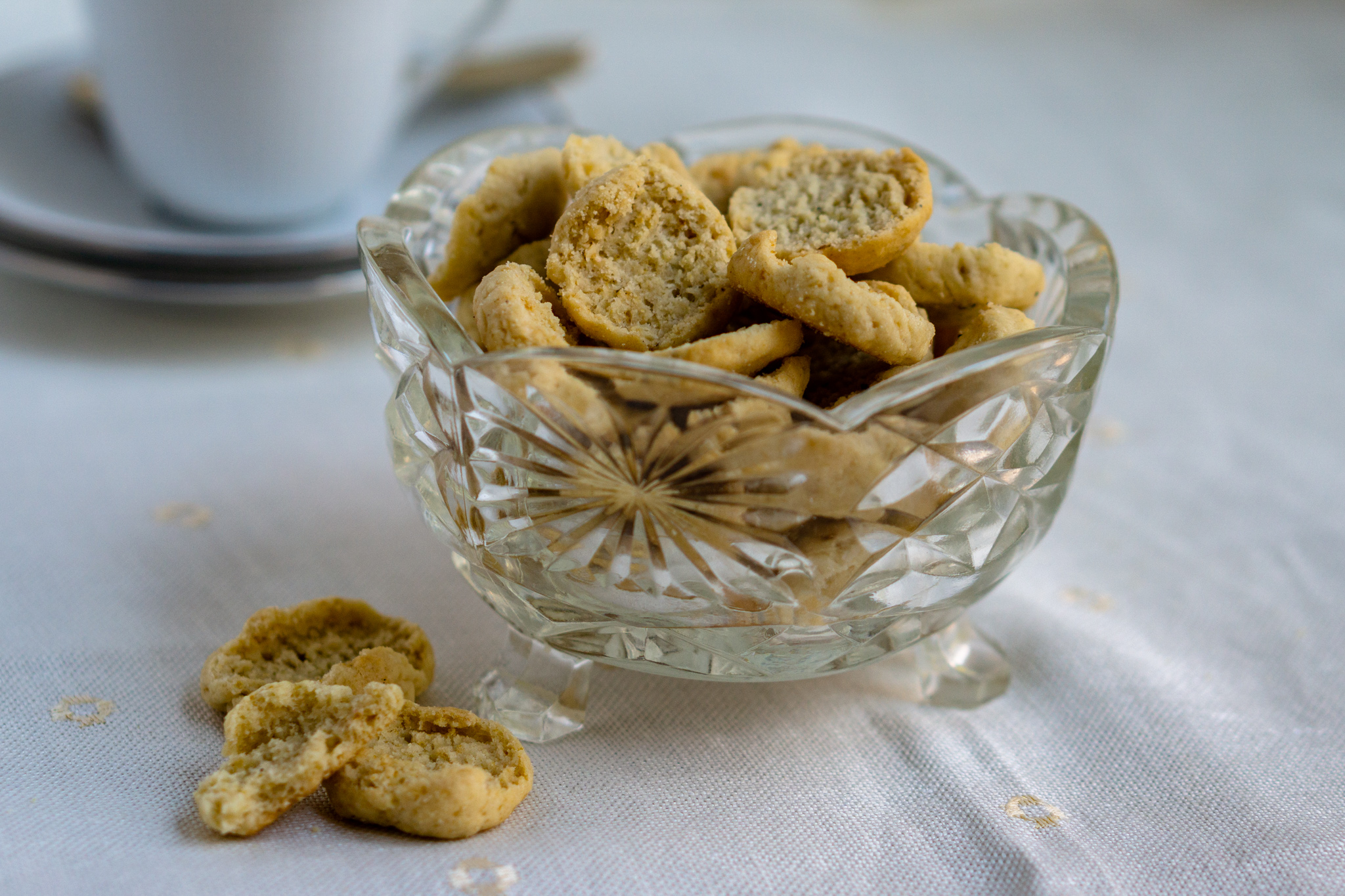I’m afraid we’re once again the department for undeservedly forgotten cookies. Because the sweet rusk is definitely a member of that sad club. Small, pale, maybe with a hint of cardamom. It may not be that surprising that the humble sweet rusks have had to give way for exaggerated pastries with more of everything.
But maybe it is time to return to this simple but useful cookie.

Sweet rusks in Swedish baking history
According to online thesaurus SAOB, sweet rusks are mentioned for the first time in an inventory of estate in Stockholm in 1673. However, it was most likely a quite different sweet rusk than the one who are common today. One big reason is that sweet rusks were made with yeast, as baking soda was a far later invention.
Apart from the proportions, the main difference between old recipes concerns how you spice the sweet rusks. In the recipe for “good sweet rusks” from Stensböle gård (18th century), you spice the rusks with a bit of lemon, mace, cardamom and alun. You can also add anise — but the recipe forgets to say anything at all about flour, maybe it was assumed?
The recipe from Ulrika Eleonora Munck’s cookbook (1770s), “Til at Baka Såcker Skårpor”, spices the rusks with mace, cardamom and cinnamon. These rusks are supposed to be shaped with an elongated rusk-cutter before they are bakde. I’ll go on a hunt for rusk cutters so I can show you a picture in the future…
Gustafwa Björklund’s cookbook (1847) flavors the sweet rusks with cinnamon and cardamom. Somewhat later, Hagdahl’s cookbook features several recipes, but the one that is divided and then baked a second time is called Dutch rusks. “This kind of rusks is sent from Amsterdam in tin boxes to far off places, are known for their texture and keep well for years.” Well, I’d rather not try a year-old rusk…
Rusks — sweet or savoury — were usually baked at the end of a large baking session, as they were left to dry in the oven as it was cooling down. The custom to cut rusks and dry them seems to be an 19th century custom — the earlier recipes I’ve found do not mention that habit.

Swedish sweet rusks during the 20th century
Ads and articles from Svenska Dagbladet shows that the sweet rusk is multi-facetted. A popular way to enjoy it is with coffee or tea — or cordial, as the picture from a summer camp shows.
The rusks are eaten together with numerous sweet soups — strawberry, blueberry, apricot, cherry, orange, chocolate, rosehip, lemon, fruit, raspberry — but also with chocolate pudding, rhubarb compotes, and rosehip mousse. Then there’s of course desserts where the sweet rusk gets a larger role, as the dessert called giftas, also known as angel food. It consists of sweet rusks layered with whipped cream and lingonberries or lingonberry jam.
Why did the sweet rusks disappear?
Well, to be fair, the sweet rusks may not have disappeared completely, but they are definitely overlooked.
Is it because the grass is greener on the other side? It is a credible explanation. At a fancy café, you might be tempted by a pastry that is more advanced or time-consuming than what you feel like making yourself.
But if we look at how sweet rusks are eaten during the 20th century, we can see another pattern, too. Prinsessornas kokbok offers a clue in the serving descriptions for their small sugar rusks: “Serve with tea or coffee or to fruit soups or compotes.”
Fruit soups have historically been popular as dessert, as we can see from the wealth of recipes in the old cookbooks. During the 20th century, the menu suggestions in the cookbooks as well as in the articles in Svenska Dagbladet suggest that it was custom that dinner was followed by dessert — at least if you could afford it. Today, I’d expect few people in Sweden to have dessert with every dinner, no matter the size of their wallet. Instead, fruit soups may be something we make in the summer season or when we have plenty of time.
So, the Swedes simply eat less fruit soup than we used to, and that’s how the sweet rusks have lost one of their main uses. Once we eat fruit soups, it’s likely one of the supermarket’s ready-made versions — and next to these packages, you’ll often find alluring packs of almond macaroons.

How to make Swedish sweet rusks with cardamom
These simple baking powder rusks are easy to make and you can vary them indefinitely, both with the flavor and how you enjoy them. This recipe is based on “small sugar rusks” from Prinsessornas kokbok from 1935. For 200-250 sweet rusks:
Ingredients
250 g (1 cup plus two tablespoons, together) butter, room-temperature
1 1/4 dl (1/2 cup) sugar
1 egg
1 1/4 dl (1/2 cup) cream
1 1/4 dl (1/2 cup) milk
2-3 tsp ground cardamom
1 tbsp (level) baking powder
about 11-12 dl (about 4 1/2 cups) flour
Instructions
- Set the oven to 225°C (435°F). Prepare three baking trays with baking paper.
- Stir butter and sugar together in a bowl. Stir in the egg and then, little by little, the cream and the milk.
- Stir cardamom and baking powder with the flour. Stir the flour into a dough. You want a consistency that you can work with and that isn’t too sticky. Don’t work the dough more than necessary for it to be well mixed.
- Roll the dough out into long logs, about 2,5 cm (1 inch) in diameter. Cut the dough in 2 cm (4/5 inch) long pieces and shape them a little as you place them on the baking tray. You can place the rusks pretty close to each other.
- Bake for about 8 minutes — they won’t have much color yet. As you bake the next tray, cut the baked rusks open with a sharp knife or a fork. Place them back on the tray with the cut side up.
- Once all rusks are baked once, lower the temperature to 150°C (300°F) and roast the rusks, one tray at a time, for 5-10 minutes. You want them to be slightly golden and dry but not brown. You can let all rusks rest in the oven as you’ve turned it off, so they dry out.
- Once the rusks have cooled and are dry, place them in an air-tight jar. Enjoy them together with coffee or tea, with fruit soup, use in desserts — however you please.
Suggestions
To get a nutty cookie, add three grated bitter almonds instead of cardamom.
These baking powder rusks are excellent together with roseship soup and blueberry soup.



Thank you for writing this. I was just looking through my old cookbooks to find a rusk recipe and wondered why most recipes online now are more like biscotti and too sweet.
Susan, you’re right, a lot of the modern rusks have been influenced a lot by the biscottis. I hope you’ll like the sweetness of this one, but if not, feel free to reduce the sugar!